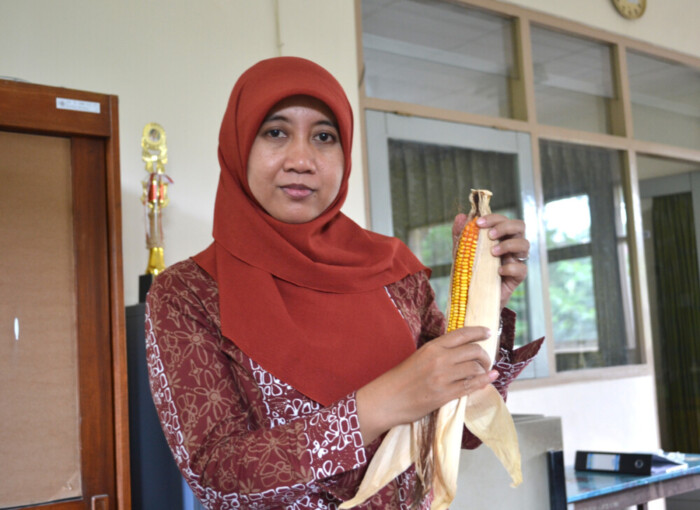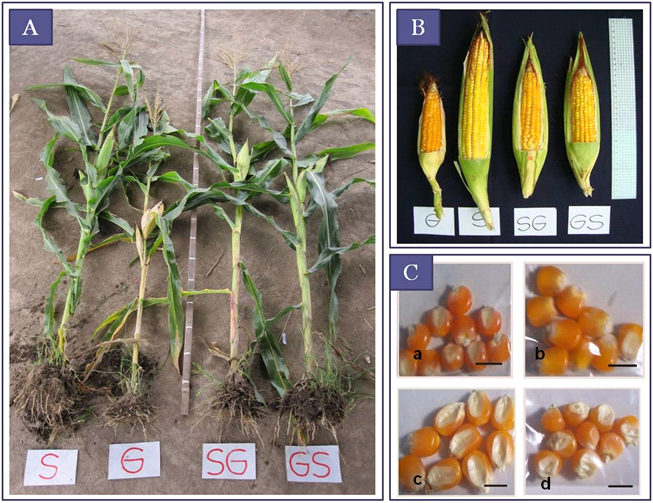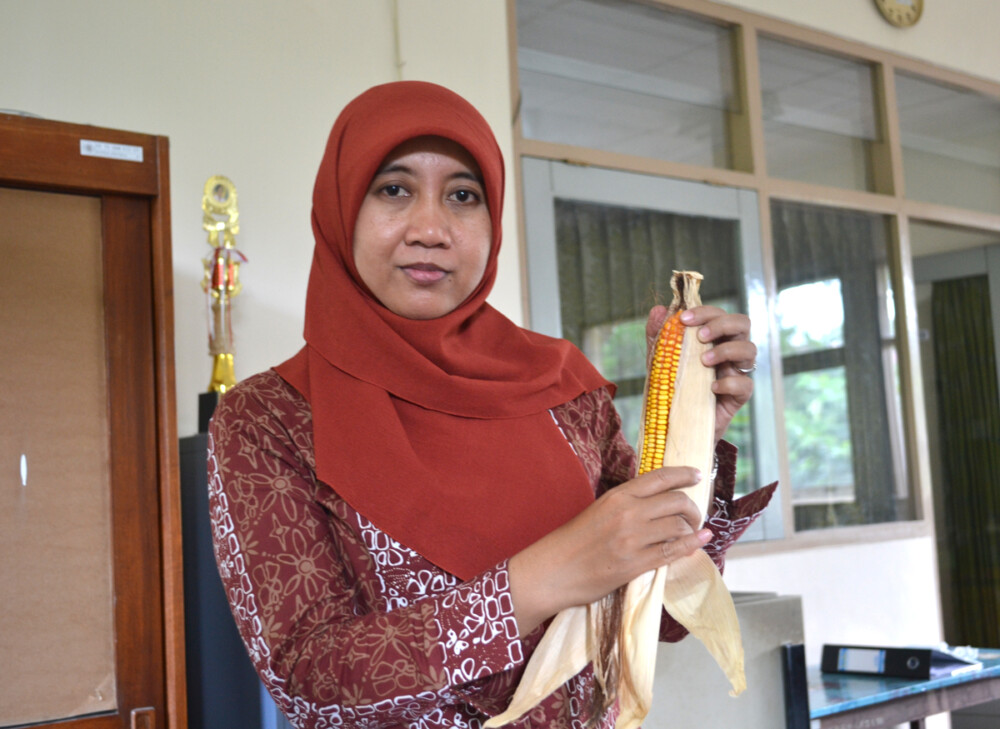YOGYAKARTA – Corn is a type of crops that is popularly known in Indonesia, each region has its own local variant with their own unique superior quality. Then, what if these superiorities are combined through cross-breeding.
Dr. Diah Rachmawati, M.Si., has researched combining two local corn varities, namely Guluk-guluk and Srikandi Kuning-1. Guluk-guluk is from Madura that has a shorter age (65-75 days), has high proteins and fats and is tolerant to dryness. Meanwhile, Srikandi Kuning-1 has durability against Cucumber Mosaic Virus (CMV) while the production is higher than that of Guluk-guluk.
The lecturer in Faculty of Biology said the cross-breeding was aimed to get a new variety that has high productivity, shorter age, virus-resistant, and able to live in areas lacking water.
Guluk-guluk is the name of a sub-district in Madura where corn is widely grown. The corn in this area can be harvested much faster, which is under three months or 75 days. Unfortunately, the production from the area only reaches 4 tonnes/hectare. Meanwhile, the Srikandi Kuning 1 from Maros, South Sulawesi, has much higher production, which is 7 tonnes while the protein and fat contents are also high.
The new corn hybrid is expected to be able to support the government’s programme in increasing national corn production as the local corn production cannot yet meet market demands, thus necessitating imports.
Field testing has shown that this corn hybrid can produce up to 6.5 tonnes per hectare in only 75 days while the cob is also longer ranging between 15-18 cm. It is also resistant to CMV and has higher protein.
Rachmawati did a reciprocal mating to the corns, namely, the female mother of Guluk-guluk is cross-bred with the male Srikandi Kuning 1 and vice-versa. The seeds resulted are called Gama GS and Gama SG with the first alphabet refers to the female type.
According to Rachmawati, the Gama GS and Gama SG are still below the more popular Pioneer hybrid in comparison, but the Pioneer has a harvesting age of 100 days.




